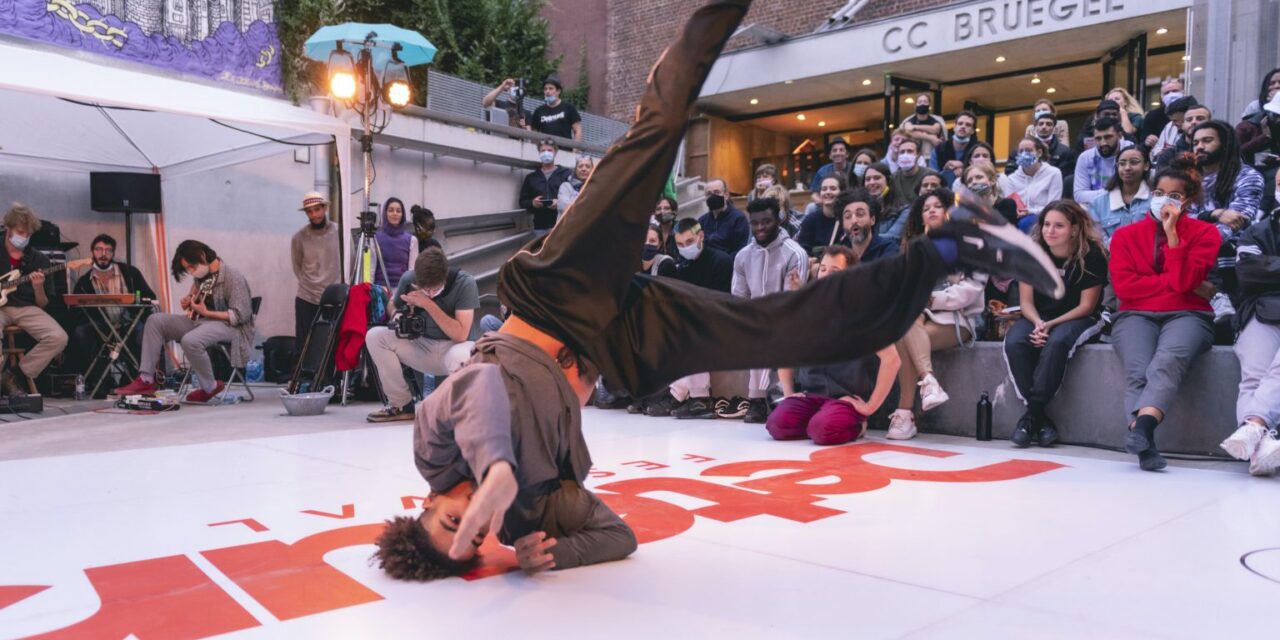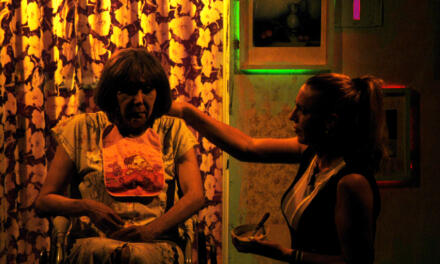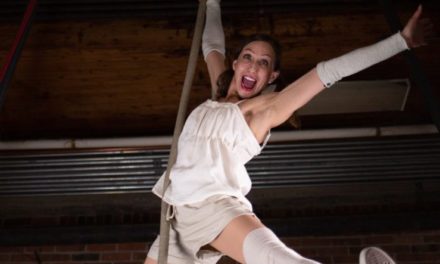With Get Down, Belgium now has its first management agency dedicated to street dancers. That is essential for the future survival of an art form every bit as authentic and culturally relevant as all other forms of contemporary dance. Writer, rapper and activist Melissa Farah Salvi discusses the need for hip hop to be granted legitimacy with the initiators behind Get Down.
Hip hop and street dance have been the passion of many for more than thirty years all around the world. Belgium is no exception. Our streets have carried on the memory of b-boys and b-girls one generation after the other, passing on fire, rhythm, dedication, and strength. Yet for a long time, Belgian street dancers were on their own in terms of managing their career. Whereas any other artists could go and ask for funding and support from institutions, street dancers had to fight their way to the stage by themselves. Camille Philippot, a PR and digital communication expert, saw the need and decided to provide a solution. Also accredited in management, marketing, and branding, Camille was working as a press agent for La Monnaie, the well-known opera house in central Brussels. Passionate about hip hop and dance, she resigned from the lyrical institution to create Get Down, a management agency dedicated to street dancers. “The idea was born of a recurring echo from the street dance community. There was a lack of professionalization, a lack of support, of tools even, and I already had a foot in the institutional system, in the cultural scene. I saw a need and my ability to meet it. I could help them access theaters and festivals, but also TV productions, music videos, advertising, and so on.” Located in Brussels, Get Down rolled out its services in Belgium and abroad. Acting as a link, they connect their artists with the cultural players or business clients willing to work with them.
One should know that hip hop was not meant to be a style. It was a culture, a movement. Rappers, DJs, breakers, and graffers represented the voice of the voiceless. On one side they made sure to be heard and seen, on the other, they rebuilt the strength of a community that was falling apart from poverty and despair. Hip hop brought hope and resilience into the darkness, teaching values such as love, peace, unity, social justice, self-worth, and respect. It was a way to have fun and to be dedicated to a greater purpose. Over the years, it became an international phenomenon. Hip hop went from the underground to the mainstream, building empires and seducing all social classes. Rebranded as “urban”, the music of hip hop could not resist the call of money and power, half the time forgetting the value system in which it was grounded. As for the dance counterpart, it has been spared to a certain extent. Its global influence did not damage its core, even though here too, we now talk of urban or street dances. Evolving through space and time, the genre has spread out over many new practices. Krump, popping, locking, dancehall, ragga, voguing, waacking, and even house share the particularity of having emerged in the street instead of the studio. In their transition from the street to the stage, artists face many battles. Too rough for theaters, too deep for commercials, they sometimes have to choose between a paycheck and the authenticity of their art. Moreover, though having the potential to create a bridge between entertainment and high art, they evolve in a world that keeps on denying the consideration they deserve as professionals.
“Hip hop brought hope and resilience into the darkness, teaching values such as love, peace, unity, social justice, self-worth and respect.”
Looking at how street dances evolve in the professional sphere, one factor cannot be understated: there is a clear dichotomy between the cultural world and the entertainment industry. Still warming up to the phenomenon, theaters are not yet completely seduced by it, whereas the industry has understood the power of street dances for a very long time. They know how bankable it is. And it’s true, street dancers sell more than ballerinas – as long as it’s not too hip hop for some. As a result, those who want to perform must be ready to compromise and comply with a more diluted style than their own. Whether it be by smoothing the edges or commercializing their vibe, street dancers shouldn’t have to try to fit in a box. They shouldn’t have to follow the lead of people who know nothing about their art. They deserve a respectful transition to professionalization and to be treated as artists, not as products. As for theaters’ preference for contemporary dancers, if one refers to the definition, street dances are the ultimate contemporary style of this generation. Whether it is in movies, commercials, on social networks, or in music videos, the way people dance today is unequivocally influenced by them. So how is it that theaters and committees are not more fond of it? Our first instinct could be to blame the people in charge of these institutions. It is no secret though that diversity is a prerequisite in terms of fair representation. In order to gain better visibility in the long run, along with artistic freedom, it could be wise for today’s generation to aim for those strategic positions. Entrepreneurship-driven dancers like Yannick Bras (Impulsion Dance), Anissa Brennet (Freestyle Lab), Mouss Sarr (Timiss), Younes Ayoute (Funky Feet Academy), Zach Swagga (Sessions Ça Danse), and others could represent their peers in our cultural institutions and artistic decisive departments. The way Alida Dors took over the Theater Rotterdam last year is proof that everything is possible.
BEYOND TECHNICAL DEMONSTRATION
In the meanwhile, Get Down makes sure their artists know how to convince artistic directors. Helping a lot in terms of communication issues, their job is to fill the gap between the cultural world and the urban scene. Far from stating that the following is a generality, some street dancers don’t know yet what to do or what to say to be heard in an elitist society. They often feel like outcasts in a system that wasn’t specially built for them. Having to be careful about how they speak or how they dress, many street dancers could use a little help as they familiarize themselves with the professional crowd. As for the latter, some doors are wide open, the KVS being a beautiful example. Their willingness to widen their audience paves the way for others to see the beauty of street dances and street arts in general. Hip hop values are actually more than relevant to most institutions, dancers just need to know how to speak their language. “Cultural centers are hungry for urban shows, but we have to go beyond the technical demonstration,” proposes dancer Milan Emmanuel from the company No Way Back, “It has to be moving and smart: an eye-opening experience to the youth with real content and a message. In order to be heard and seen, street dancers must find their own singularity, their own uniqueness and have something deep to say.”
“In their transition from the street to the stage, hip-hop artists face many battles. Too rough for theaters, too deep for commercials.”
As a matter of fact, many measures have been taken over the years to help produce urban creations. Different organizations and people have done their share, reaching out to committees and commissions to get street dancers the funds they need. Some even produce and stage the show. Unfortunately, most artists get to perform it once then end up helpless. This is for several reasons, the first being that street dancers were not taken seriously for a long time. They were not considered real dancers in comparison to their contemporary and classical peers. Another cause is the persistence of institutional racism. It got better along the way, helped by the gentrification of the genre, but there is still a long way to go. All the more so as the cultural sphere is often hiding behind a conservative perspective of art. Facing that reality, the lack of entrepreneurial spirit among most Belgian street dancers can also explain the shortfall of professionalization in their field. It is actually something that is missing altogether in Belgium. While giving them the distribution support they need, Get Down insists that street dancers start investing in themselves instead of relying on people’s willingness to help.
SPEAK UP WITH THE HEART
As for now, the management agency represents Nadine Baboy, Briana Stuart, Lila Magnin, Elena Gambardella, and Justine Theizen. They also work with two companies (No Way Back, I Am Woman) and one collective (The Revolutionary). The goal is not to have a huge panel of artists but to provide a tailor-made service to meet their career needs. The selection criteria are more human than technical; obviously, their artists need to be hard-working and talented, but the one thing they highlight the most is their value system. Get Down’s dancers all have a message to share. They focus on social cohesion, trying to build up a common culture and inspire the next generation. Addressing themes like the youth, the system, or the state of the world, they remind us that dancing goes way beyond entertainment. “I fell in love with hip hop because it allowed me to express a personal pain, a repulsed feeling I couldn’t frame otherwise,” explains Max De Boeck from The Revolutionary. “Dancing helps you let go of your hardships, it keeps you straight when you struggle. That’s what hip hop is to me at its core: a way to speak up with my heart and moves, a way to say things I can’t put into words.”
However, dancing for a living is not an easy path in Belgium, especially for a street dancer. Aside from the strife that goes along with applying for an artistic status, opportunities are not around every corner. Teaching is inescapable for most; it is in fact the only stable source of income. On one hand, it allows them to open up to new horizons and grow thicker skin. On the other, it’s keeping them away from doing what they are most passionate about. Creating a dance company, a non-profit, or pushing your luck abroad are few ways to overcome the matter; all of the above being extremely fulfilling. Nevertheless, we land back on the conclusion that Belgium hasn’t sufficiently invested in the cultural industry. And the struggle doesn’t end here. It is widely known that artists, no matter their craft, must earn respect in order to earn money. They are often asked to work for free in exchange for presumed visibility. Not willing to sell out, street dancers face the same reality and miss out on opportunities for the sole reason of knowing their value. While not undermining how other dancers deal with that issue, taking urban arts from the street to the stage does imply a paycheck. To be acknowledged as professionals by all, it is imperative for street dancers to be recognized economically. All these situations combined make it clear that being a professional dancer requires a fair amount of entrepreneurial skill. Yet no matter how hard you work, you’re not taken seriously as long as you represent yourself. Get Down will see to it. Enabling street dancers to focus on dancing and nothing else, the agency seems to be a real spring in the wilderness.
HIP HOP AS ESSENCE
As they’re rolling up their sleeves, the everlasting evolution of hip hop cannot be denied. From railway stations to studios and stages through the multiplication of urban styles, street dancers are not done surprising us. They keep on reinventing themselves, growing from their diversity. The power of street dancers stands in the fact that they transcend art to be in line with the development of society. Their values are playing a transformational role in people’s lives. “My first heartbeat is to inspire men and women to reconnect to their true identity,” explains Nadine Baboy. “Many of the issues we are facing on this earth find their source in a misconception of who we are as individuals. I truly believe that once we get to know who we are, we start to get a better understanding of our purpose. Our lack of self-awareness often leads us to envy others. We tend to feel guilty and insecure about our own situation, we get jealous, we kill each other. It’s essential to realize that it’s okay to be who we are and where we belong. There’s no wrong place, no wrong identity. We should be working together towards a purpose that’s bigger than us. Sadly, we fell for this individualistic era, we just don’t get it.”
“The power of street dancers stands in the fact that they transcend art to be in line with the development of society.”
Having that in mind, one can wonder why the government qualifies art as non-essential. Since the beginning of the pandemic, the chosen silence about culture has been loud and clear: artists are not a priority. “Seeing how we are left aside calls our legitimacy into question,” says Aurel Zola from The Revolutionary. “Some artists have found a new way to provide a living, others had to change jobs. It definitely affects our mental well-being. The fact that the government is completely silent about artists and culture in general, it really hurts. It would be different if they were at least talking about us, but they’re not. They turn a blind eye to our struggle and have no alternative for us, we don’t generate enough profits for them to care.” While again this is the case for all artists, the assault course street dancers have to fight to gain status makes their struggle more profound. The official measures related to the sanitary crisis allow professional dancers to get studios and practice, while others go back to the street. It is not new to them, but the current situation worsens their difficulties. To be considered a professional dancer in Belgium, real contracts must be signed, yet all they seem to be offered are small allowance conventions (RPI, ed). Street dancers need a structure like Get Down more than ever, to give them the right information and guide them towards professionalization. It’s about time they get a share of all the money they generate, hoping they’ll stick to their authenticity. Now it’s easier said than done. Staying true to the essence of hip hop and protecting its integrity is a mission that no one can do on their own. It takes unity. It takes transmission. It takes the guts to realize that it’s powerful enough to create its own system, to generate sustainable incomes and jobs without having to beg for consideration. Gentrifying the culture is not the only way. As we should all know, trees grow from their roots, not from their branches.
This article was originally posted on Etcetera and has been reposted with permission. To read the original article, please click here.
This post was written by the author in their personal capacity.The opinions expressed in this article are the author’s own and do not reflect the view of The Theatre Times, their staff or collaborators.
This post was written by Melissa Farah Salvi.
The views expressed here belong to the author and do not necessarily reflect our views and opinions.






















